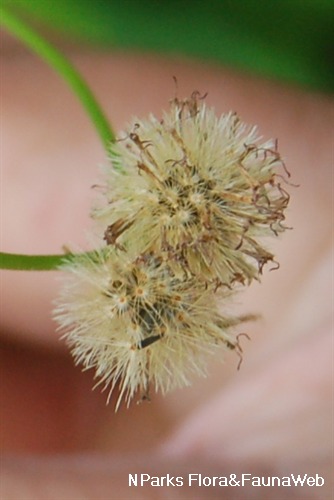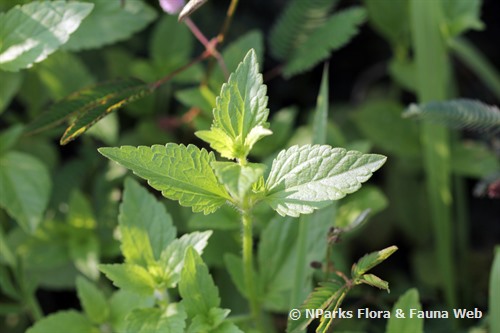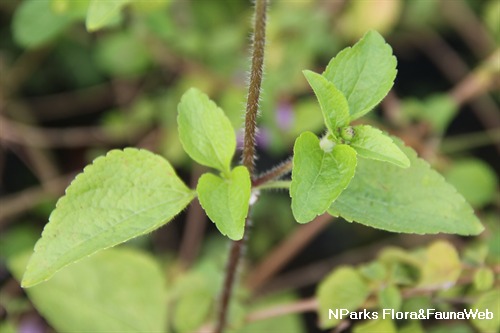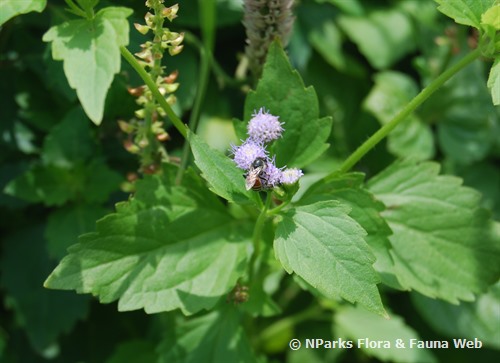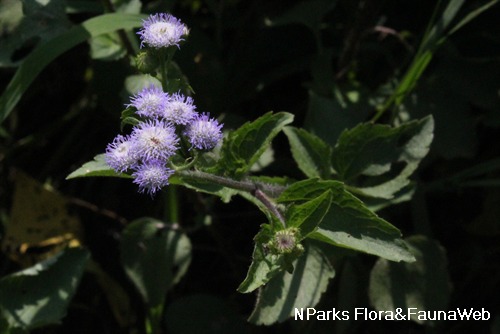
Back
Ageratum conyzoides (L.) L.
| Family Name: | Asteraceae (Compositae) |
| Synonyms: | Ageratum album, Ageratum arsenei, Ageratum ciliare, Ageratum cordifolium, Ageratum hirsutum |
| Common Name: | White Weed, 白花草 |
Name
Classifications and Characteristics
| Plant Division | Angiosperms (Flowering Seed Plants) |
|---|---|
| Plant Growth Form | Herbaceous Plant |
| Mode of Nutrition | Autotrophic |
Biogeography
| Native Habitat | Terrestrial |
|---|
Description and Ethnobotany
| Growth Form | Herbaceous plant with an erect growth habit. |
|---|---|
| Foliage | Ovate leaves with serrate leaf margin are arranged in pairs (opposite leaf arrangement). |
| Stems | Reddish purple or light green stem is covered in soft white hairs. |
| Flowers | The inflorescence is composed of a cluster of 30-50 white to purple flowers. It is known as a corymb. |
| Fruit | Dry, indehiscent fruits are known as achenes. The small, single-seeded fruits are dispersed by wind. |
| Cultivation | Seeds germinate best at temperatures of 20-25 degrees Celsius. |
| Etymology | The genus Ageratum is derived from Greek words that mean not aging. It is a reference to species in the genus with long-lasting flowers. The specific epithet conyzoides comes from the Greek name of Inula helenium (konyz), an herbaceous plant that looks similar to Ageratum conyzoides. |
| Ethnobotanical Uses | Medicinal: Whole plant extracts in water provided pain relief and increased mobility in patients with arthritis (Neto et al 1988, Mattos 1988). Others: The leaves contain insecticidal compounds that promote early metamorphosis and altered morphological development (Sujatha et al. 1988, Ekundayo et al. 1987, Raja et al. 1987). |
Plant Care and Propagation
| Light Preference | Full Sun, Semi-Shade |
|---|---|
| Water Preference | Moderate Water |
| Plant Growth Rate | Fast |
Image Repository
Others
| Master ID | 30827 |
|---|---|
| Species ID | 5183 |
| Flora Disclaimer | The information in this website has been compiled from reliable sources, such as reference works on medicinal plants. It is not a substitute for medical advice or treatment and NParks does not purport to provide any medical advice. Readers should always consult his/her physician before using or consuming a plant for medicinal purposes. |


